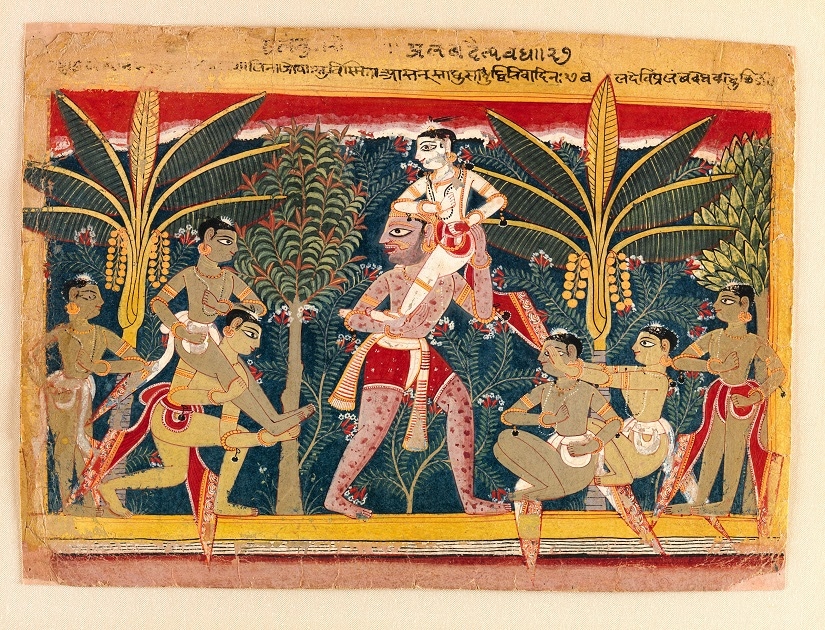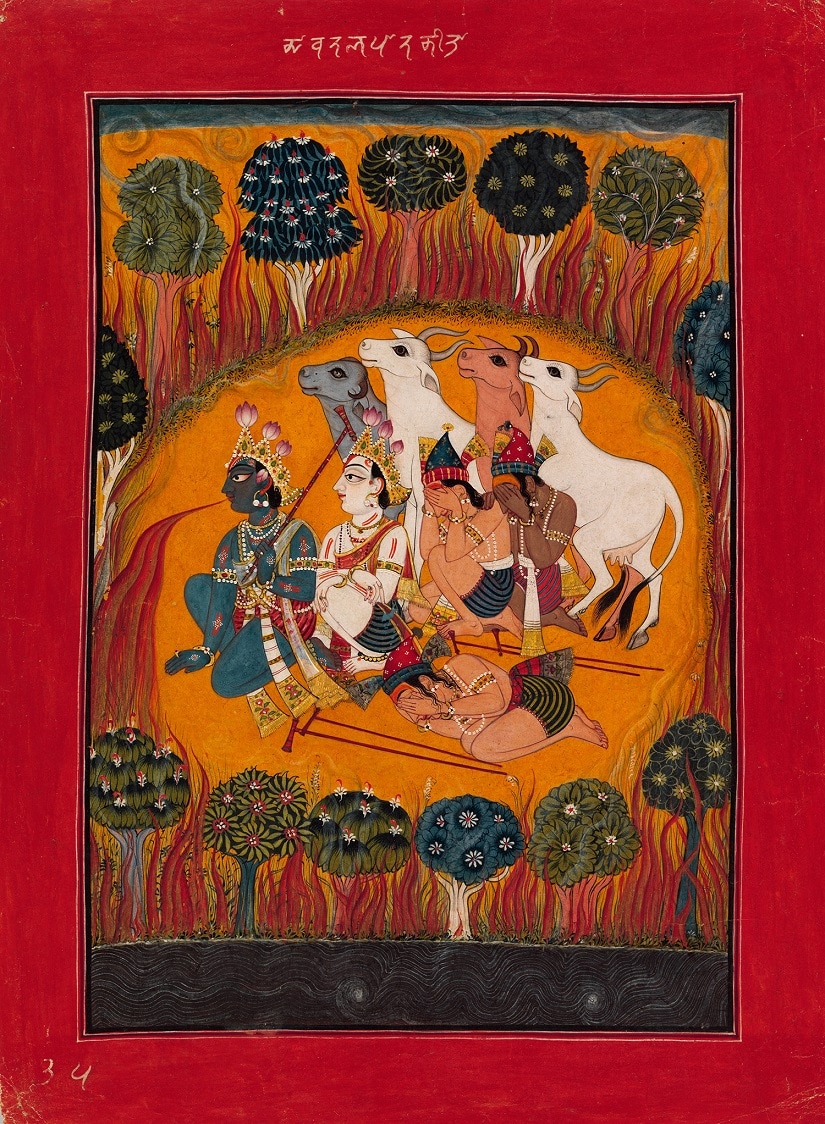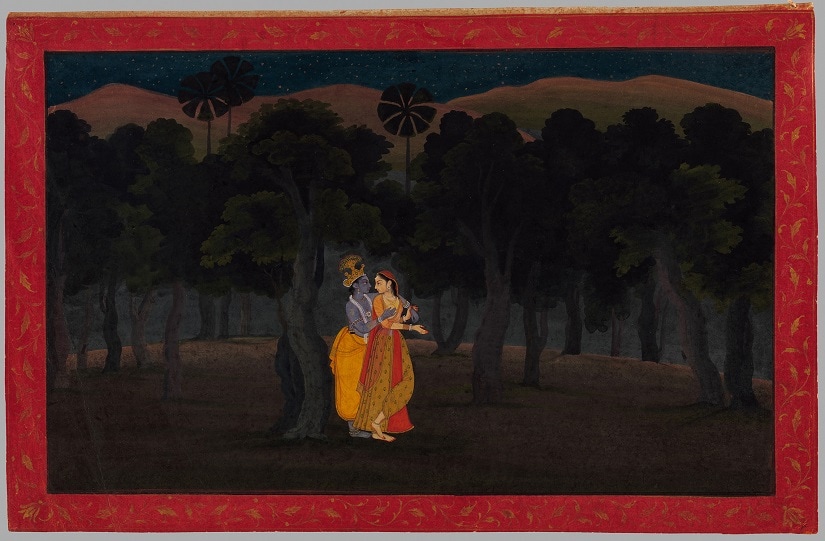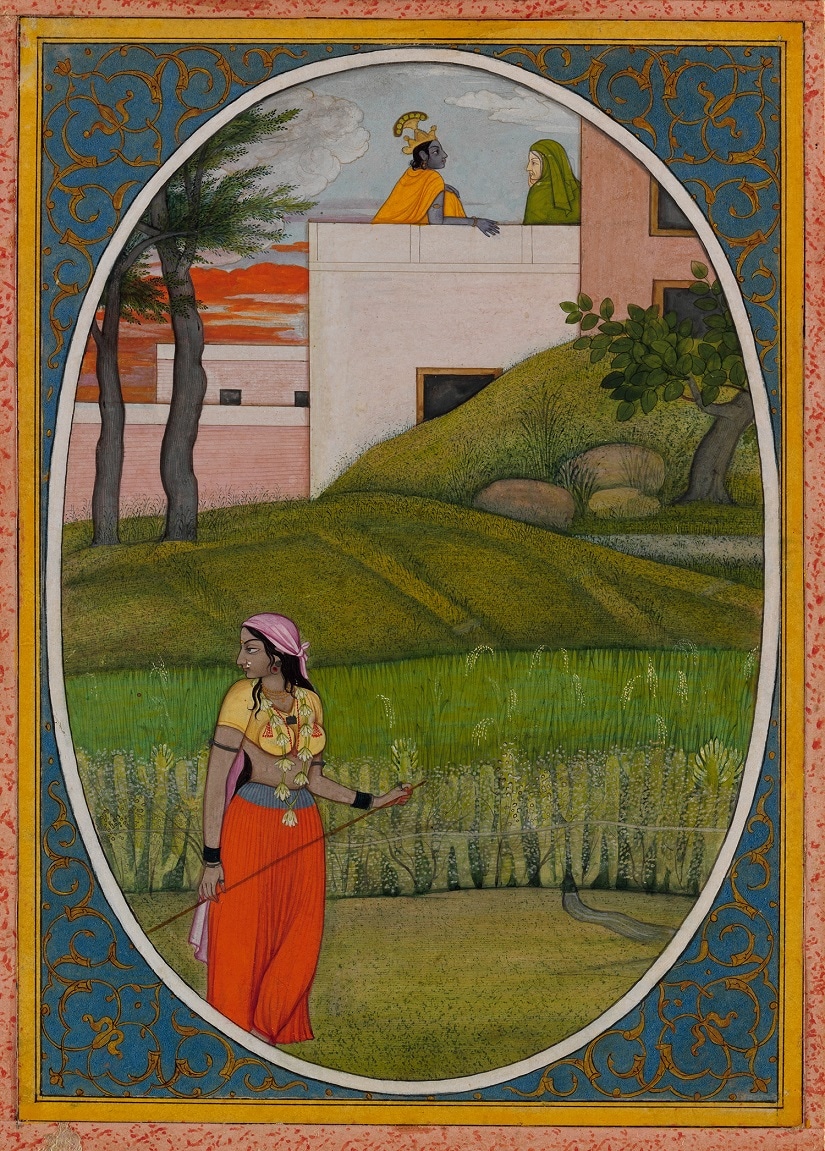Earlier this year, The Metropolitan Museum of Art received a long-promised gift from one of its most generous contributors, the independent collector Steven M Kossack. Steven, who was at one point of time the curator of Asian art at the MET, is one of the few remaining, independent collectors who have dedicated their life to a culture and its aesthetic. Titled Divine Pleasures: Painting from India’s Rajput Courts—The Kronos Collections the exhibition showcases about a hundred paintings created between the 16th and 18th centuries, in the northern regions of Rajasthan and the then Punjab hills. With a view to expanding their already sizeable collection of Mughal paintings, Kossack generously donated 100 Rajput works from his Kronos Collection, some of which are being exhibited for the first time. [caption id=“attachment_2909044” align=“alignleft” width=“825”]
 Blind Man’s Buff. Image courtesy: The Metropolitan Museum of Art[/caption] Dipped in mythology and mystery these miniatures are a postcard to a tradition that has found its unique place not only in the history of Indian art but with collectors and museums worldwide. There is the notoriety of Krishna stealing the clothing of Gopis where Krishna is shown perched on a tree as his Gopis bathe in a stream below, his playfulness evident in Hide-and-Seek: Krishna Playing a Game with the Gopas (Cowherds). Then there is the unbowed regality of A Nobleman and His Devoted Wife Seated in the Forest; Two Female Musicians Attend. [caption id=“attachment_2909072” align=“alignleft” width=“825”]
 Krishna Swallows the Forest Fire
Attributed to the Master at the Court of Mankot
(active ca. 1690–1730). Image courtesy The Metropolitan Museum of Art[/caption] The paintings, done on paper and preserved somehow through the ages, are a throwback to a time when, evidently, Indian art was an exponent of the freethinking artist, inspired, and not limited by the narrow vision that the following ages have now cast. An example of this is the striking The Lovers Radha and Krishna in a Palm Grove which shows Krishna and Radha twined in a dark forest, their love most resplendent in its rescue act within the painting, as a kind of homage to what eventually revives and reinstates the human condition – true love. [caption id=“attachment_2909080” align=“alignleft” width=“825”]
 The Lovers Radha and Krishna in a Palm Grove. Image courtesy The Metropolitan Museum of Art[/caption] The importance and vitality of these miniatures can be adjudged from the fact that Kossack admittedly, while a curator at the Met himself, dished money from his own pocket to collect these fabulous works, when the museum could not. The exhibition has been divided into three sections – Early Rajput and Rajasthan, early Pahari (Punjab Hills), and later Pahari. The schools displayed extend from Mewar and Kota to the northern hills of Chamba and Kangra. [caption id=“attachment_2909086” align=“alignleft” width=“825”]
 The Village Beauty
Probably painted by the artist Fattu (active ca. 1770–
1820). Image courtesy The Metropolitan Museum of Art[/caption] Divine Pleasures is on at the The Met Fifth Avenue in New York till 12 September, 2016
The paintings, done on paper and preserved somehow through the ages, are a throwback to a time when Indian art was an exponent of the freethinking artist.
Advertisement
End of Article


)
)
)
)
)
)
)
)
)



